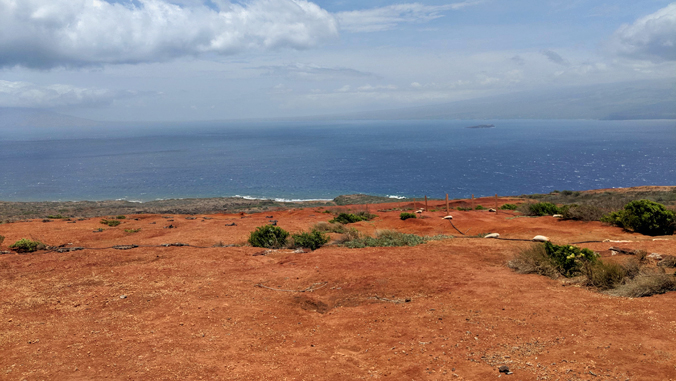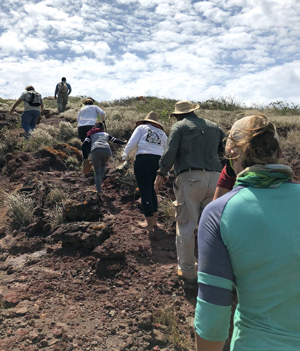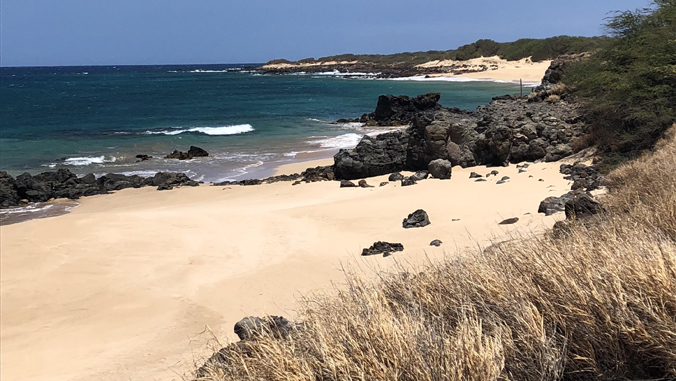
Just a few miles away from the tourist lights of Kīhei, Maui, is a barren, windswept island devoid of top soil and riddled with unexploded ordnance. Kahoʻolawe, with its complicated history, has much to teach about sustainability and resilience of an island and a community.
Davianna Pōmaikaʻi McGregor, a University of Hawaiʻi at Mānoa professor of ethnic studies, is leading a team of UH faculty members organizing two workshops on Kahoʻolawe, with the goals of enhancing faculty capacity to engage in the sustainability and resilience of island ecosystems, and integrating indigenous Hawaiian science into curriculum.

“The island is both a symbol of abuse and neglect of an island ecosystem and of the determination of Hawaiʻi‘s people to protect our precious islands,” said McGregor.
The focus of the first workshop, held in late summer, was to envision and design research projects to support the sustainability and resilience of island ecosystems that can be piloted on the island. Twenty UH faculty members and several stewards of Kahoʻolawe discussed and strategized about management challenges, energy and water sustainability, as well as ocean, wetland and land restoration efforts.
The second workshop, scheduled for March 2019, will feature Kalei Nuuhiwa, specialist in traditional Native Hawaiian science from the Edith Kanakaʻole Foundation. She will share examples of and facilitate sessions on how to design and integrate indigenous Hawaiian science into curriculum offered by various departments at UH.
“These workshops offer unique professional development opportunities for faculty and create opportunities for building relationships and collaboration from diverse fields across the university,” said Makena Coffman, director of the new UH Mānoa Institute for Sustainability and Resilience.
An island rich in history and culture
Kahoʻolawe is a historically and culturally rich training ground. Originally, the island was a center for observing the seasonal and daily movements of the sun, stars and moon, and for training navigators in wayfinding.
It was degraded by goat, sheep and cattle ranching and live fire military training exercises in the 19th and 20th centuries. Beginning in 1976, the Native Hawaiian community rallied under the call of aloha ʻāina to stop military use of Kahoʻolawe. That came true in October 1990.
“We hope to create a lasting momentum toward engaging in sustainability and resilience problems from a perspective that is more grounded in Hawaiʻi‘s people and places,” said team member Oceana Francis, associate professor of civil and environmental engineering.
Other UH team members include C. Kaliko Baker, assistant professor of Hawaiian Language, Kawaihuʻelani Center for Hawaiian Language in the Hawaiʻinuiākea School of Hawaiian Knowledge; Rosie ʻAnolani Alegado, assistant professor in the Center for Microbial Oceanography: Research and Education; Josh Kaakua, a diversity specialist with the UH Office of STEM Education; and Kamakana Aquino, coordinator of the College of Social Sciences Native Hawaiian Initiative.
Instructional faculty at UH Mānoa who are interested in applying to participate in the spring 2019 workshop on Kahoʻolawe can complete the application form.
—By Marcie Grabowski


